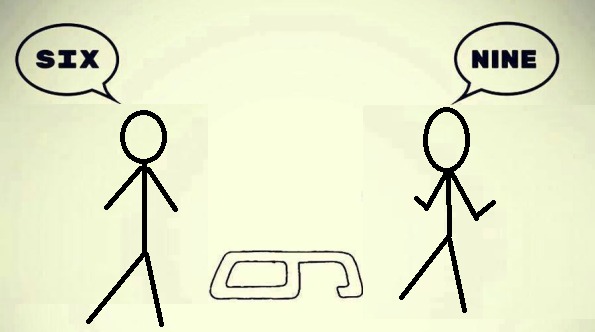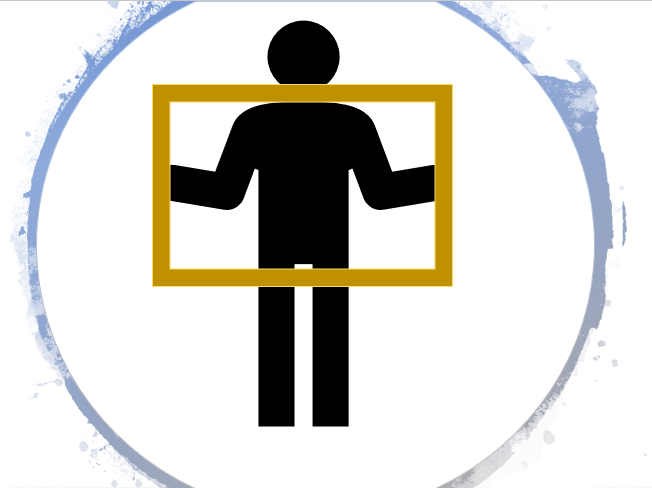For any interaction to be meaningful, knowing the context of interaction is very important. A typical example of context is how two people, standing at two different points perceive the same thing differently.

Till one person has a look at another persons perspective they will always be at loggerheads, trying to convince other that their perspective is the right perspective.
Understanding the context is not only important for us, as individuals but is equally important when coaching. Unless, we understand the context where the coachee is established it would be difficult to empathize and work with the coachee.
Neuro-linguistic Programming (NLP) works in the premise of frames. NLP frames provide us with the much desired context to understand one’s thoughts and actions. Once the context is understood it becomes easier to work on one’s thoughts and actions to achieve desired positive outcomes.
But what exactly are these NLP frames and how do they help in clarifying the context. Well, let’s explore and understand each of them.
Blame Frame:
When the context in which we operate is focused on “blaming” someone/something for our problems/challenges, we are operating in the blame frame. For ex: I was not able to access my emails because Simon never gave me access to the virtual machine.
The thoughts or actions of a person in Blame Frame state are always about problems and lead to experiences of limitation and lack of choices. Such a person is always seeking for excuses, justifications of why she doesn’t have what she wants.
As If Frame:
This frame is about exploring possibilities. The idea behind this frame is to believe that a desired state or outcome has been achieved. With the As-If frame, the thoughts, actions are always exploratory. This often helps to let go of any limitations that a situation or person creates. For ex: In a business meeting, a critical stakeholder is unavailable then using the As-If frame we can always start the meeting by asking – “Let’s act ‘as if’ Mr. Reddington is present. What would he do?”
In a coaching scenario if the coachee is stuck at some point there as well the As-If frame is very useful. The coach can always ask the coachee – “Consider as if the constraint doesn’t exist anymore. What else the coachee can do?”
Outcome Frame:
When the focus of our thoughts and actions is on the outcomes we want to achieve and the resources that would be required we operate from the premise of the outcome frame. The outcome frame shifts the focus to results; makes thinking more creative and allows us to solve the problem.
The outcome frame is oriented towards future, towards getting results, towards being more resourceful to overcome our challenges. It makes us more capable. Unlike the “Blame Frame”, we are not part of the problem but we are contributing to the solution. As rule of thumb, for any activity one should pursue, one should define an outcome. For ex: When I work with teams as an agile coach, the outcome that I tend to focus on is to build a more engaged and efficient team.
Back-track Frame:
A back-track frame is useful when we want to clarify a situation. This is very helpful when we have to check any sort of agreement or understanding towards the conclusion of an event or a meeting. It is a way to ensure that everyone has same understanding of what has been discussed and stay focused on the outcomes to be achieved. It also helps if discussion is stuck. We can always back track to the last point agreed upon, re-align and start over. For ex: In a business meeting which is stuck, one can re-align by stating -“let’s take a pause and back track for a moment”.
Ecology Frame:
Often when we working towards our goals, we tend to overlook other aspects of our life. How our actions are impacting others – family, friends, colleagues, environment and even larger community. For ex: If a sales representative, in order to improve his sales keeps travelling back to back to distant places leaving her family behind is sure to have problems on the personal front.
Ecology frame helps to understand how our pursuit of our goals is going to impact the people around us. Considering the effect of our actions on other systems will help determine a more holistic approach to achieving our goals without creating any adverse impact on other systems.
Evidence Frame:
As the name depicts, this frame helps to determine if we are progressing towards our outcome. It also helps to know when the outcome would be achieved.
Evidence frame helps us to identify ‘evidences’, facts that we can inspect to know if we are moving in the right direction. In case, a deviation is found we can take corrective actions or re-evaluate and set a new outcome. For ex: An author who wants to publish a book can have an evidence that there is hard copy of the book printed to know that her outcome is met. In a shorter run, she can always much smaller outcomes such as – characters decided – for which she can have an evidence such as – character list is ready by some date.
Relevancy Frame:
Relevancy frame helps us to determine if what we are thinking or doing is really relevant in the current context. This helps to keep the discussion focused and flowing in the right direction. This is very useful in the coaching scenarios where the coachee starts racing on a thought process that has nothing to do with the current desired outcome. The coach can ask simple questions such as – “how is this related to our discussion at hand?” to bring the coachee back on track.
Do not hold a frame:
Now that we know a few of NLP frames and learned their usage, the next thing we need to know is that we should not hold on to a frame. To clarify a bit further, if you want to define an outcome although using outcome frame is great. But at times, the blame frame can be helpful to determine the outcome by thinking about the problem first.
Framing and re-framing is a continuous activity. Through our thoughts, words and actions we keep creating new possibilities. These possibilities if stuck within one frame will yield only one kind of results. When a situation is analysed through different frames, we create more possibilities and opportunities for us to grow and thrive.
To Conclude:
NLP frames provide us with the context to understand the thoughts, words and actions. However, holding on to one frame of though will always yield one kind of result. Understanding the usage of frames help us to build an enriching and fulfilling experience of diverse possibilities and opportunities.
